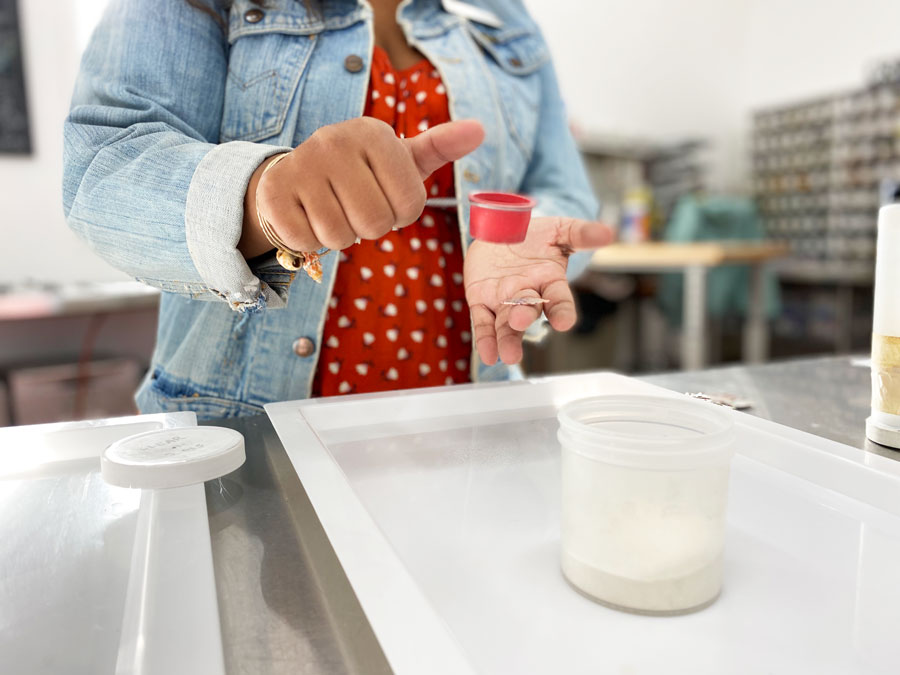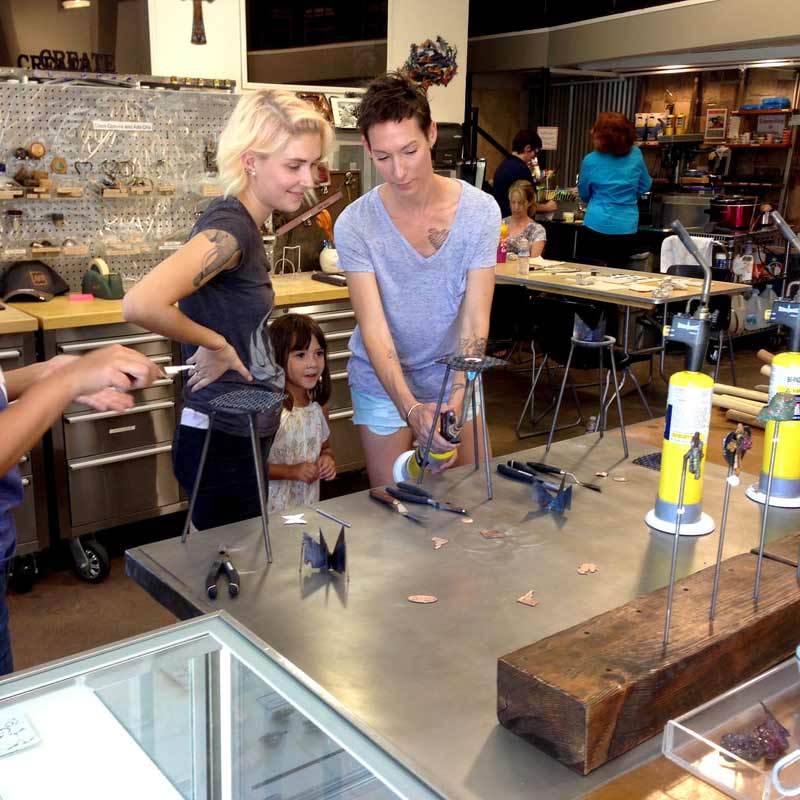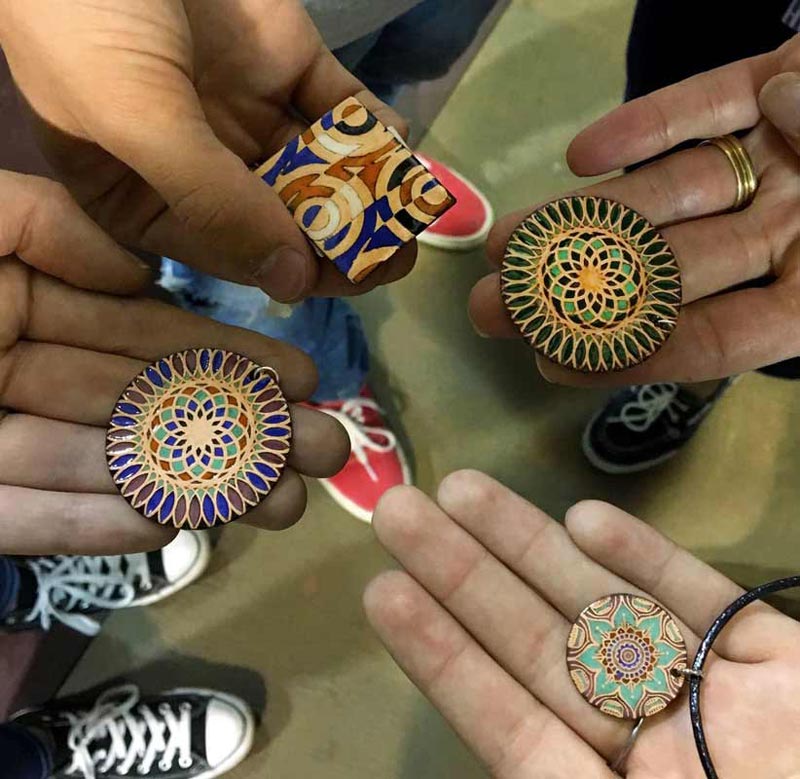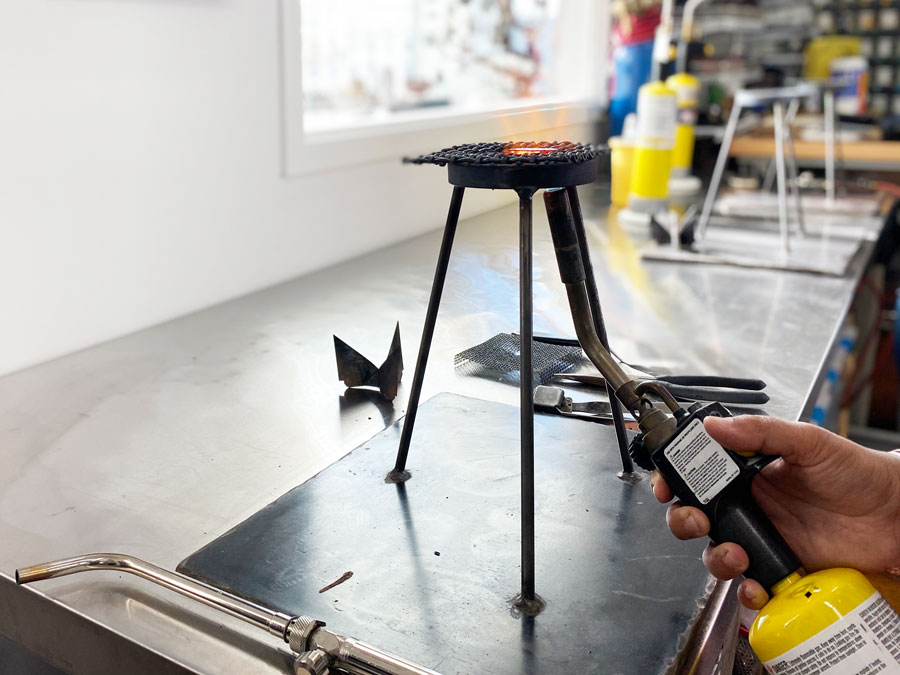Enameling For Beginners - Check Calendar for Class Times
What is Enameling?
Vitreous enamel, also porcelain enamel, is a material made by fusing powdered glass to a substrate glass, by firing, usually between 750 and 850 C (1,380 and 1,560 F). The powder melts, flows, and then hardens to a smooth, durable vitreous coating on metal, or on glass or ceramics. The term “enamel” is most often restricted to work on metal. Enameled glass is also called “painted”. Fired enamelware is an integrated layered composite of glass and metal. The word enamel comes from the Old High German word smelzan (to smelt) via the Old French esmail Used as a noun, “an enamel” is a usually small decorative object, coated with enamel coating. Enameling is an old and widely adopted technology, for most of its history mainly used in jewelry and decorative art. Since the 19th century the term applies also to industrial materials and many metal consumer objects, such as some cooking vessels, dishwashers, laundry machines, sinks, and tubs.
Vitreous enamel, also porcelain enamel, is a material made by fusing powdered glass to a substrate glass, by firing, usually between 750 and 850 C (1,380 and 1,560 F). The powder melts, flows, and then hardens to a smooth, durable vitreous coating on metal, or on glass or ceramics. The term “enamel” is most often restricted to work on metal. Enameled glass is also called “painted”. Fired enamelware is an integrated layered composite of glass and metal. The word enamel comes from the Old High German word smelzan (to smelt) via the Old French esmail Used as a noun, “an enamel” is a usually small decorative object, coated with enamel coating. Enameling is an old and widely adopted technology, for most of its history mainly used in jewelry and decorative art. Since the 19th century the term applies also to industrial materials and many metal consumer objects, such as some cooking vessels, dishwashers, laundry machines, sinks, and tubs.
Each beginning class is a 2 - 2.5 hour group class
Starting at $75 per person
These classes provides you with an overview of the ancient and beautiful fine art of fusing glass to metal. Learn the exquisite and dramatically colorful art of enameling which has been practiced, enhanced and applied in just about every era of fashion, from its very ornate and flourished origins, to its stylized and edgy present.
What you’ll take home with you:
- 2 unique copper enamel pieces. 200+ copper shapes and a variety of add-ons like charms available for additional cost.
- A wealth of knowledge and the spark to take your jewelry making and new enameling skills to the next level.
Kids Welcome!
- Minors must be 8 years or older to take an enameling class.
There is a $20 Cancellation Fee within 24 hours of the class.
Check out our Enameling Class CALENDAR to see which classes we are teaching this month!
Vouchers or Gift Certificates: Please Call to Book.





